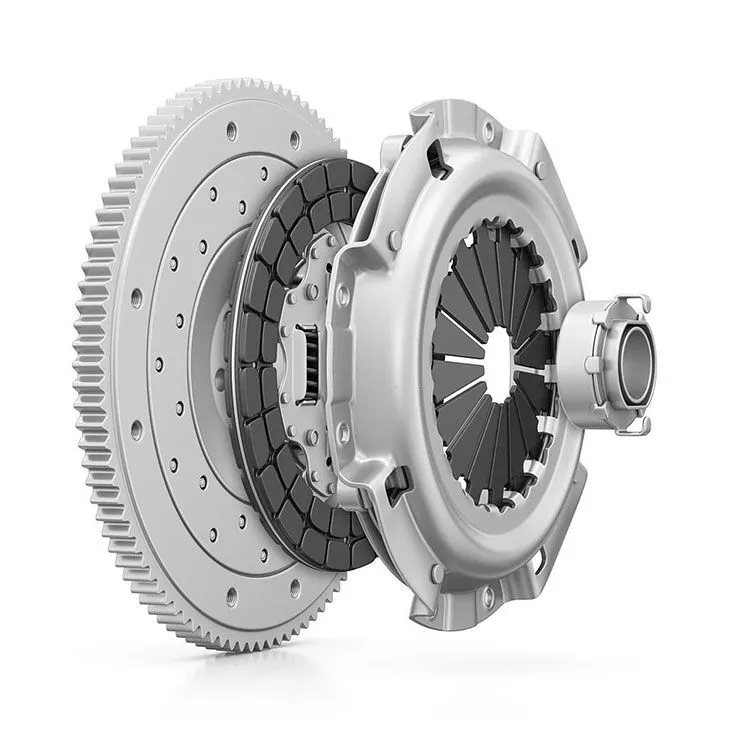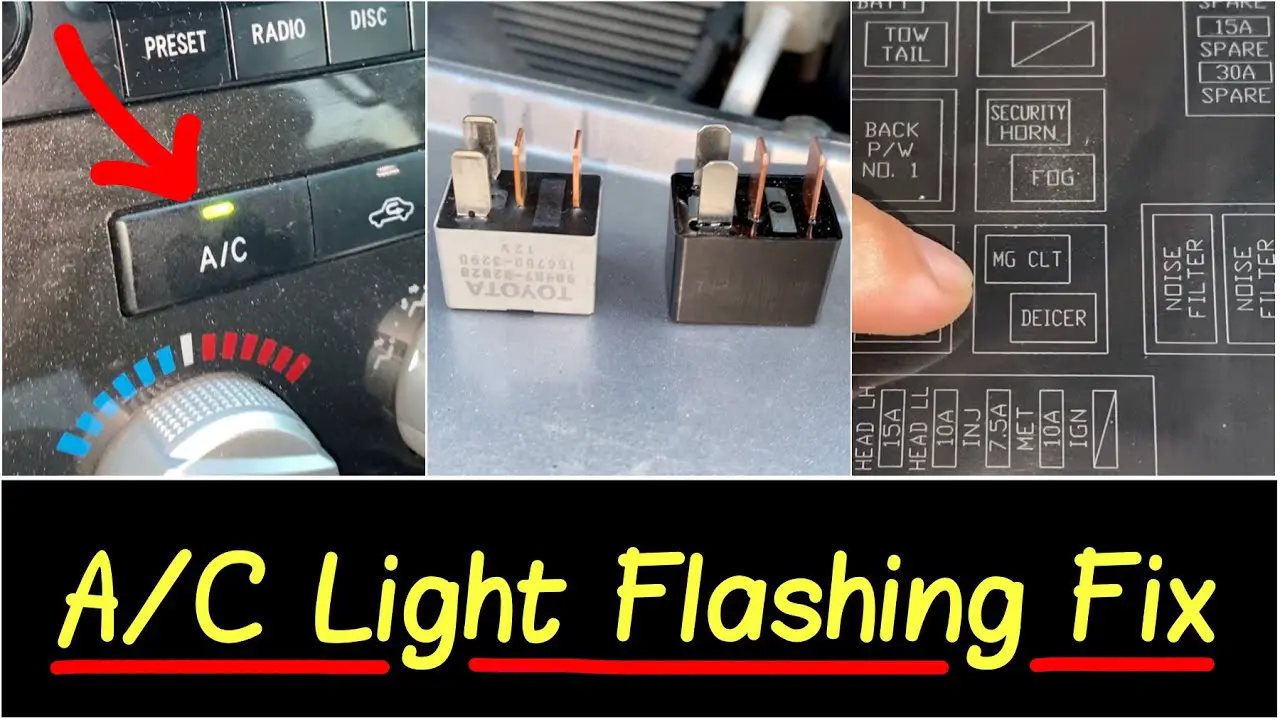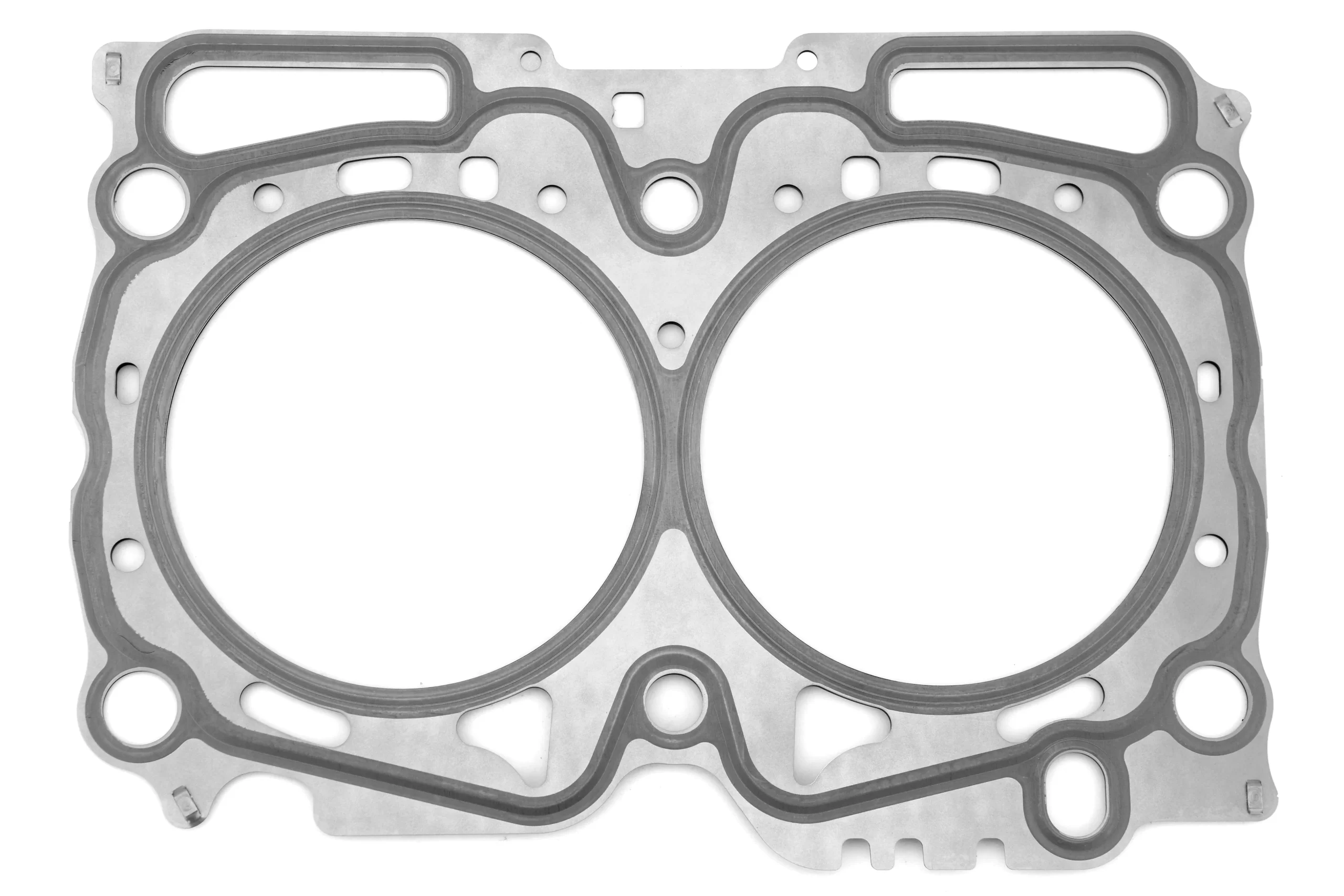When you’re driving a car with a manual transmission, you might notice a strange noise. It’s a sound that’s there one moment and gone the next, disappearing as soon as you press the clutch. This phenomenon, often described as “Manual Transmission Noise, Goes Away When Clutch Pressed”, can be puzzling.
In this article, we’ll explore what’s happening inside your car when this occurs. We’ll look at the parts involved, how they work together, and what might cause this noise. So, whether you’re a car lover or just curious about what’s happening under the hood, this article is for you. Let’s get started!
What is the reason for the clutch noise that disappears when pressed?
The clutch in a car is a complex piece of machinery that plays a crucial role in the operation of a manual transmission vehicle. It’s responsible for transferring the power from the engine to the transmission, allowing the driver to change gears and control the vehicle.
One common issue that drivers may encounter is a noise coming from the clutch that disappears when the clutch pedal is pressed. This noise is often a sign of a problem that should not be ignored.
The noise could be caused by several factors:
-
Worn Out Clutch Release Bearing
The clutch release bearing, also known as the throw-out bearing, is a small but essential part of your clutch assembly. When it wears out, it can cause a squealing or growling noise when the clutch pedal is not pressed. However, this noise usually goes away when you press down on the clutch pedal.
-
Faulty Pilot Bearing
The pilot bearing allows the input shaft and the engine crankshaft to rotate at different speeds. If it’s damaged or worn out, it can cause a noise when the clutch pedal is not pressed.
-
Clutch Fork Issues
The clutch fork is a lever that engages and disengages the clutch pressure plate. If it’s bent or damaged, it can cause a noise when the clutch pedal is not pressed.
-
Misaligned Clutch Components
If the components of the clutch are not properly aligned, they can rub against each other and cause a noise. This noise typically disappears when the clutch pedal is pressed.
-
Clutch Disc Wear or Damage
The clutch disc is sandwiched between the engine’s flywheel and the clutch pressure plate, and it is designed to engage and disengage the flow of power from the engine to the transmission. Over time, the clutch disc can wear out or become damaged, especially if the vehicle is often driven in heavy traffic conditions where the clutch is frequently used. This can cause a noise that disappears when the clutch pedal is pressed.
-
Clutch Cable Wear
In some vehicles, the clutch pedal is connected to the clutch fork via a cable. This cable can stretch or wear out over time, which can cause a noise when the clutch pedal is not pressed.
-
Lack of Lubrication
The clutch assembly contains several moving parts that need to be properly lubricated. If there’s not enough lubrication, these parts can create a noise when they come into contact with each other. This noise usually goes away when the clutch pedal is pressed because pressing the pedal changes the position of these parts.
-
Clutch Pedal Adjustment
If the clutch pedal is not properly adjusted, it can cause a noise when the pedal is not pressed. The adjustment of the clutch pedal affects the point at which the clutch engages and disengages. If this point is too high or too low, it can cause the clutch to make a noise.
-
Clutch Housing Issues
The clutch housing, also known as the bell housing, contains the clutch disc, pressure plate, and flywheel. If there’s a problem with the housing, such as a crack or damage, it can cause a noise when the clutch pedal is not pressed.
-
Clutch Pressure Plate
The clutch pressure plate is a spring-loaded device that can wear out or become damaged over time. When the clutch pedal is not pressed, the pressure plate applies force to the clutch disc to engage the clutch. If the pressure plate is faulty, it can cause a noise that disappears when the clutch pedal is pressed.
-
Flywheel Problems
The flywheel is a large, heavy wheel that is attached to the engine’s crankshaft. It provides a smooth surface for the clutch disc to grip when the clutch is engaged. If the flywheel is warped or damaged, it can cause a noise when the clutch pedal is not pressed.
-
Clutch Master Cylinder and Slave Cylinder
These hydraulic components play a crucial role in the operation of the clutch. The master cylinder converts the mechanical force of the clutch pedal being pressed into hydraulic pressure. This pressure is then transferred to the slave cylinder, which disengages the clutch. If either of these components is faulty, it can cause a noise when the clutch pedal is not pressed.
-
Transmission Input Shaft
The input shaft is part of the transmission and is connected to the clutch disc. If the input shaft is bent or damaged, it can cause a noise when the clutch pedal is not pressed.
-
Clutch Pedal Assembly
The clutch pedal assembly includes the pedal, pushrod, return spring, and other components. If any part of this assembly is loose or damaged, it can cause a noise when the clutch pedal is not pressed.
What causes the transmission to produce a noise when the clutch is engaged?
The clutch pedal is linked to the fork, which holds the release bearing, via a cable or rod. When the clutch pedal is depressed, the release bearing is pushed into the clutch cover’s strong springs. This action relieves pressure on the clutch disc, allowing the transmission to shift.
Why does a manual transmission make noise that stops when the clutch is pressed? Some noise is expected, but a loud squeal indicates a problem. This noise is the release bearing nearing its end. Normally, this bearing should spin freely. A loud squeal suggests the bearing is seizing up, which can quickly damage the clutch cover.
The bearing itself is relatively inexpensive. However, since it’s located over the transmission input shaft, removing it requires taking out the entire transmission, which is labor-intensive and costly.
It’s advisable to promptly address any squealing noises to avoid being stranded. Moreover, it’s prudent to replace the entire clutch assembly while the transmission is out.
Also Read: Tesla Daily Data Limit Reached: What You Need to Know
What are the steps to fix a noisy clutch?
Fixing a noisy clutch involves several steps and requires some mechanical knowledge. Here’s a step-by-step guide:
Step 1: Identify the Problem
The first step in fixing a noisy clutch is to identify the source of the noise. This could be due to a worn-out clutch release bearing, a faulty pilot bearing, or issues with the clutch fork, among other things. Listen carefully to the noise and try to determine its source.
Step 2: Gather Necessary Tools
You’ll need various tools to fix a noisy clutch, including a jack, jack stands, wrenches, and possibly a clutch alignment tool. Make sure you have all the necessary tools before you start.
Step 3: Safety First
Before starting any work on your vehicle, ensure it is parked on a flat surface and the parking brake is engaged. Use the jack to lift the front of the vehicle and secure it with jack stands for safety.
Step 4: Remove the Transmission
The clutch is located between the engine and the transmission, so you’ll need to remove the transmission to access it. This is a complex task that involves disconnecting the driveshaft, removing the starter motor, and disconnecting the transmission from the engine.
Step 5: Inspect the Clutch
Once the transmission is removed, you can inspect the clutch for wear and damage. Look for signs of wear on the clutch disc, pressure plate, and flywheel. Also, check the release bearing and the pilot bearing for any signs of damage.
Step 6: Replace Faulty Parts
If you find any worn or damaged parts, replace them. This could involve replacing the entire clutch assembly, or just the faulty part.
Step 7: Reassemble the Transmission
After replacing the faulty parts, reassemble the transmission. Make sure to align the clutch disc with the flywheel using a clutch alignment tool before reattaching the pressure plate.
Step 8: Test the Clutch
Once everything is reassembled, test the clutch to make sure the noise is gone. If the noise persists, you may need to seek professional help.
Remember, if you’re not comfortable doing this yourself, it’s always best to take your vehicle to a professional mechanic. Working on a vehicle’s clutch and transmission can be complex and requires a certain level of mechanical knowledge and skill. Safety should always be your top priority.
What kind of noise does a clutch make when it’s failing?
A failing clutch can produce several types of noises, which can serve as warning signs for drivers. Here are some common noises associated with a failing clutch:
- Squealing or Chirping When Pressing the Clutch: This noise often indicates a worn-out release bearing or pilot bearing. These bearings allow the clutch system to operate smoothly, and when they wear out, they can produce a high-pitched noise.
- Grinding Noise When Shifting Gears: If you hear a grinding noise when shifting gears, it could mean that the clutch isn’t disengaging properly. This could be due to a worn clutch disc or problems with the hydraulic linkage.
- Rattling Noise When the Clutch is Engaged: A rattling noise when the clutch pedal is out (and the clutch is engaged) could indicate a problem with the clutch basket/assembly.
- Knocking or Clunking Noise: A knocking or clunking noise could indicate a problem with the clutch release or throw-out bearing.
These noises are often the first signs of a failing clutch. If you notice any of these sounds, it’s important to have your vehicle inspected by a professional mechanic as soon as possible to avoid further damage. Remember, regular maintenance is key to prolonging the life of your vehicle’s clutch and ensuring a smooth and safe ride.
What are the sounds indicative of a malfunctioning manual transmission?
Manual transmissions can produce distinct sounds when malfunctioning.
- Rhythmic clunking, a sign of worn gears or loose components, is one such noise.
- Grinding during gear shifts often indicates a clutch failing to disengage.
- Lastly, a whining sound that fluctuates with engine RPM could suggest issues with the transmission’s input or output shaft bearings.
These noises are key indicators of potential transmission problems.
Why Does My Clutch Pedal Make a Grinding Noise?

A grinding noise from the clutch pedal can indicate several potential issues. It might mean that the clutch disc is worn or damaged, which can prevent it from disengaging correctly. This can cause the gears to grind against each other when shifting, leading to a grinding noise.
Alternatively, the noise could be a sign of a problem with the clutch release bearing or the clutch fork. Both of these components are vital for the clutch’s operation, and if they’re damaged or worn, they can cause a grinding noise.
If you notice this sound, it’s recommended to have your vehicle inspected by a professional mechanic.
What is the cost to fixing a noisy clutch?
The cost to fix a noisy clutch can vary significantly depending on the specific issue and the make and model of your vehicle. On average, clutch repairs can range from $100 to $2,000.
For minor repairs that do not require removal of the transmission, costs are typically in the area of $100 to $500. However, more extensive repairs requiring the removal of the transmission can cost between $700 and $2,000.
In the UK, the average clutch replacement cost is around £500 – £600, but it can range from £450 to £1,000 or more.
These costs include parts like the clutch kit, which often includes a clutch friction disc, pressure plate, throwout bearing, and a pilot bearing. Labor costs can also be a significant part of the total expense, especially for complex repairs that require the removal of the transmission.
Please note that these are average costs and the actual cost can vary based on factors like your location, the mechanic’s rates, and the extent of the damage to the clutch. If you’re experiencing clutch noise, it’s recommended to get a quote from a local mechanic for the most accurate estimate.
What is the lifespan of a noisy clutch release bearing?
A noisy clutch release bearing, also known as a throwout bearing, could last anywhere from an hour to five years. The lifespan of a noisy clutch release bearing depends on several factors:
- The specific wear or damage to the bearing.
- The quality of the bearing.
- Your driving habits, such as smooth clutch application and frequency of start-stop traffic.
However, a clutch typically lasts for about 50,000 to 100,000 miles. But, a noisy clutch release bearing can last for 5 years or just 5 minutes. It’s important to note that these are average lifespans and the actual lifespan can vary based on factors like your driving habits and the make and model of your vehicle.
Ignoring this issue could lead to more serious damage and costly repairs. Therefore, if you notice any unusual noises coming from your clutch, it’s recommended to have your vehicle inspected by a professional mechanic as soon as possible. Regular maintenance and inspections can also help to prevent these issues and ensure that your vehicle remains safe and reliable.
How do I know if my clutch is slipping?
If your clutch is slipping, you might notice several symptoms:
- Rising RPM, but Lack of Speed: When the clutch slips, the engine RPMs rise, but the vehicle doesn’t speed up correspondingly.
- Burning Smell: As the clutch slips, you may smell something burning coming from the front of the vehicle. This smell is generated from the excessive heat created by the disengagement of the engine and the slipping clutch.
- Decreased Engine Performance: If you are pushing your vehicle to the limits, such as when you are towing, you may notice that the engine doesn’t put out the power it should.
- Difficulty Changing Gears: You may experience difficulty shifting gears when you engage or disengage the clutch.
- Grinding Noises: Grinding noises coming from the gearbox could be a sign of a slipping clutch.
These are just a few signs of a slipping clutch. If you notice any of these symptoms, it’s recommended to have your vehicle inspected by a professional mechanic as soon as possible. Ignoring these signs could lead to more serious damage and costly repairs. Regular maintenance and inspections can also help to prevent these issues and ensure that your vehicle remains safe and reliable.
FAQs: Manual Transmission Noise, Goes Away When Clutch Pressed
How often should I replace my clutch?
The lifespan of a clutch can vary greatly depending on the vehicle, driving conditions, and driving habits. On average, a clutch should last between 50,000 and 100,000 miles.
Can I drive with a noisy clutch?
While it might be possible to drive with a noisy clutch, it’s not recommended. The noise is usually a sign of a problem that needs to be addressed. Ignoring it could lead to more serious damage and costly repairs.
Can a noisy clutch be a safety issue?
Yes, a malfunctioning clutch can potentially be a safety issue. If the clutch fails completely, it could lead to a loss of control of the vehicle.
Can I fix a noisy clutch myself?
While it’s possible to fix a noisy clutch yourself if you have the necessary skills and tools, it’s usually best to have it repaired by a professional mechanic. They have the expertise to properly diagnose and fix the problem.
How can I prevent my clutch from becoming noisy?
Regular maintenance and inspections can help prevent clutch noise. Also, practicing good driving habits, such as not riding the clutch and shifting gears properly, can prolong the life of your clutch.
Conclusion
Anoise that disappears when the clutch pedal is pressed can be a sign of various issues within the clutch assembly. From worn-out clutch release bearings to misaligned components, these problems require attention to prevent further damage. Understanding these noises and their causes is the first step towards addressing them. Regular maintenance and prompt response to unusual sounds can help ensure the longevity of your vehicle’s clutch and overall performance. Remember, when in doubt, it’s always best to consult with a professional mechanic. Drive safe!




